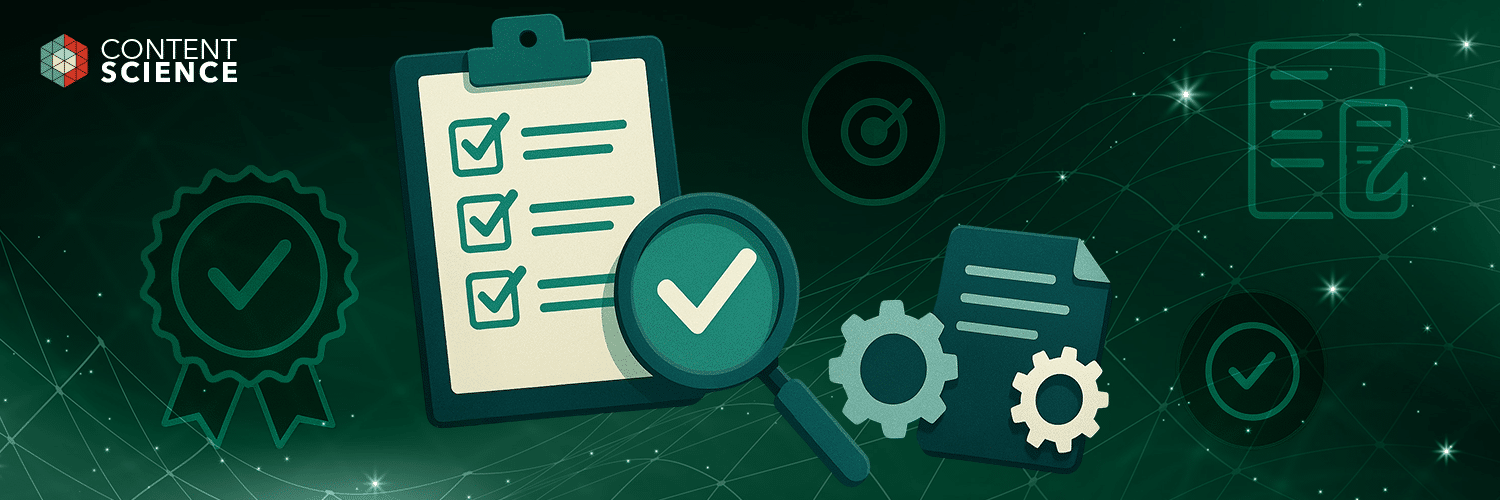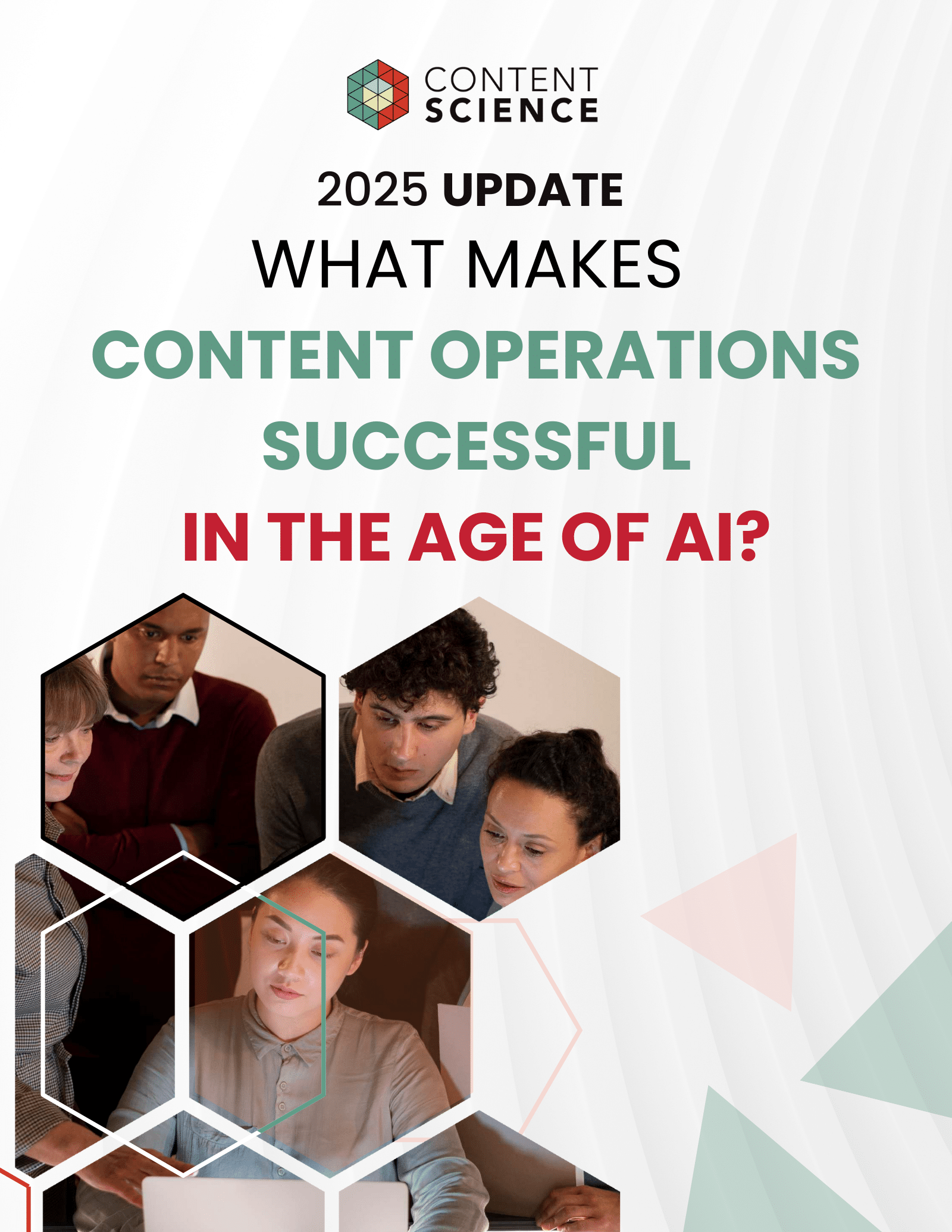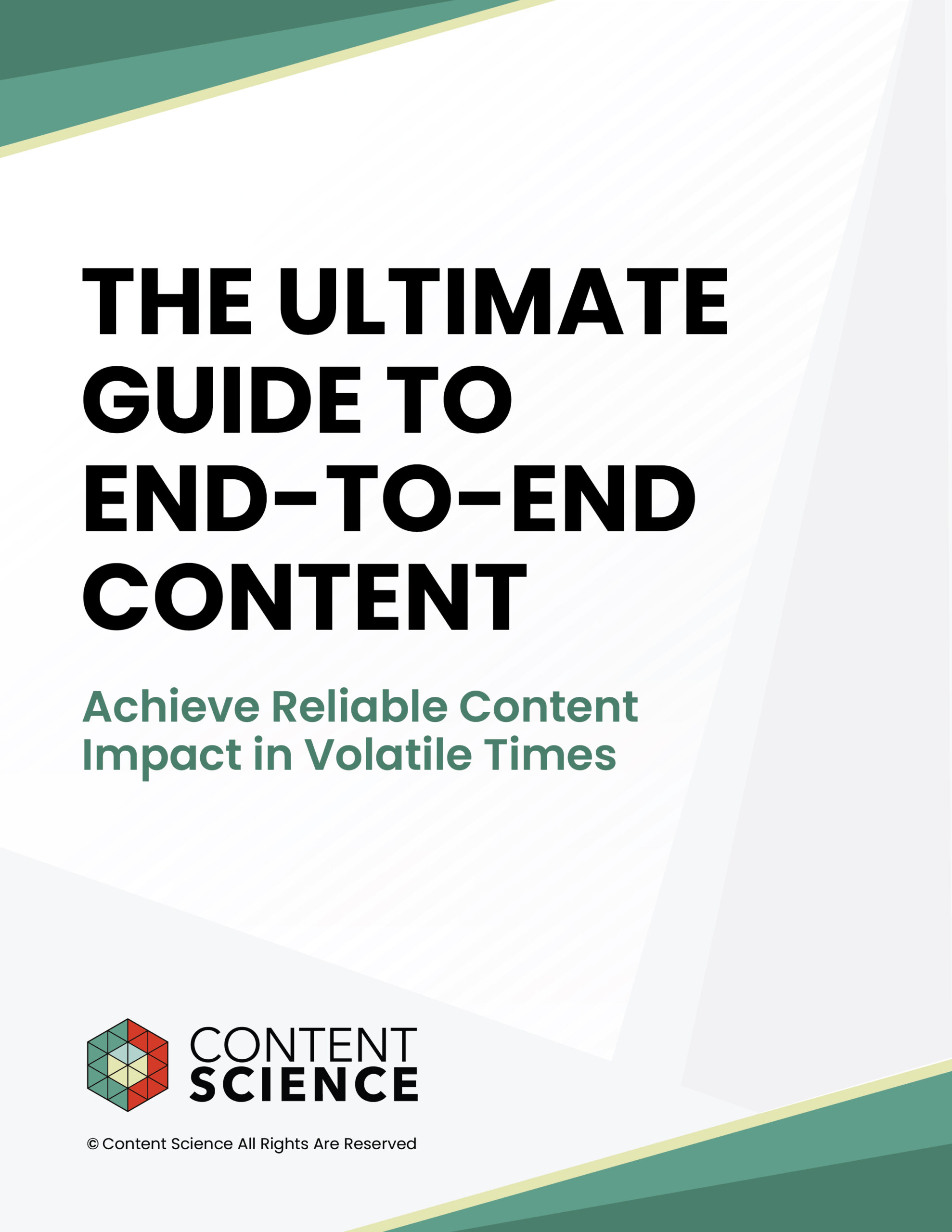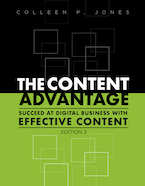
As use of artificial intelligence increases, so does low quality content increase online. While no one has an exact statistic, the problem became so bad that Google changed its search algorithm in 2024 to reduce the chances of giving low quality content prominent placement. Let’s consider what content quality is and why it can be even more of an asset to your organization now.
What Is a Definition of Content Quality?
Chances are you can find many different definitions of content quality. At Content Science, we view content quality this way:
Content quality is the degree to which your content adheres to current standards and best practices.
Some standards and best practices are longstanding or fairly evergreen, such as Section 508 accessibility requirements. Other standards and best practices might change over time, as SEO requirements change in the age of AI search bots.
What Are Example Standards and Best Practices for Content Quality?
Example standards and best practices for content quality include
- SEO (metadata, page weight, etc.)
- Device + Browser Display (graceful degradation, etc.)
- Accessibility (W3, Section 508, etc.)
- Regulations (FTC, etc.)
- Channel Requirements (character limits, etc.)
- Brand Voice + Style
- Design Principles + Guidelines
- Content Type Standards
- Plain Language Guidelines
- Inclusive Language Guidelines
- Writing Best Practices (chunking, layering, concision, etc.)
Content quality standards and best practices can be external, such as browser display requirements, or internal, such as your brand’s voice and style.
What Are the Benefits of Content Quality?
When an organization achieves and maintains good content quality, everyone wins. Let’s take a closer look at the benefits.
Benefits for Customers
When the content your organization offers is of high quality, customers typically
- Find relevant content faster.
- Make informed buying decisions faster.
- Understand the value of the product / service.
- Use self service options successfully.
- Learn how to use the product / service and its content faster.
- Trust the product / service and its content.
- Adopt new features / services successfully.
- Experience less friction and more delight.
Benefits for Busineses / Organizations
As your customers benefit from content quality, your organization will
- Improve your content’s effectiveness and sustainability.
- Strengthen trust and reputation.
- Increase feature and self service adoption.
- Reduce customer support costs.
- Increase customer satisfaction.
- Reduce or prevent churn.
- Minimize legal risk and costs.
- Win new customers faster.
- Expand sales with existing customers.
- Reduce risk of digital transformation failure.
For instance, Chris Hester of UL Systems articulated the connection between adhering to quality standards and sustainability in one of our content operations studies:
If you can start managing your content debt [in quality]—remove content you don’t need anymore, manage the size of your images, start managing your page weight— you can start laying the groundwork for more sustainable content practices.
What Is the Difference Between Content Quality and Content Effectiveness?
Content quality is the degree to which content adheres to your standards and best practices. Content effectiveness is the degree to which content enables customers or users to achieve their goals and, at the same time, enable your organization to achieve its goals.
Your organization could offer content that meets certain quality standards and, yet, isn’t useful or influential enough to make an impact on goals.
We view content quality as the foundation on which you build effectiveness or impact. If your content doesn’t meet accessibility or findability standards, for instance, it will never have the opportunity to be effective. We also view measuring content effectiveness as part of a larger content intelligence system.
Why Are Some Ways to Establish and Maintain Content Quality?
Your organization can improve your content’s quality or maintain the level of quality you have in three key ways.
1. Define the Right Content Workflow
Specifically, ensure your content workflow consistently involves the right people or systems with the right expertise and authority. Consider whether your content workflow includes
- Expertise in the product + technology to judge accuracy.
- Authority to approve legal language or items impacting compliance.
- Expertise in appropriate design + content skills or standards.
- Clarity on + commitment to who will review what when (e.g. RACI chart).
- Automation of workflow (notifications, reminders, status, etc.).
- Accountability for content review in job descriptions / performance goals.
- A QA testing step / phase for content.
2. Document the Content Quality Standards or Best Practices
Documenting what content quality means at your organization is crucial to aligning or training everyone involved in the workflow. One common form of documentation is a style guide. Public examples of content style guides include Mailchimp, Intuit, and Red Hat.
Content Science also often recommends two other forms of documentation:
- Checklist(s) that summarize what should be completed or present. Research in diverse contexts ranging from neurosurgery to nuclear power plants show checklists reduce errors. You can create your own checklist or use Content Science’s interactive content quality checklist.
- Playbook(s) that explain the who, what, when, where, why, and how of executing content processes or procedures. Playbooks are more actionable and engaging for people than style guides, so they’re less likely to sit unopened.
Where should you keep all of this documentation? We see much success in making documentation part of a larger governance effort, especially a center of content excellence.
Another benefit of documenting content quality is you can set up or train technology to help automate adherance.
3. Explore How Technology and AI Can Help
A range of AI-enhanced tools and technology can help with assessing or maintaining content quality. Examples include
- SEO tools such as ahrefs, Siteimprove, and MarketMuse.
- Writing assistants such as Grammarly and Writer.
- Accessibility tools such as Accessibe and AccessibilityChecker. (An extensive list of accessibility tools is available at the W3C website.)
AI models and copilots are starting to integrate tools, as well. For instance, Microsoft Copilot can assess readability level. If you decide to use an AI model or an AI-enhanced tool, check how the model or tool is ensuring accuracy (e.g. correct reability assessments) over time.
And if your organization is using generative AI to create content at scale, assess the risks to content quality so you can mitigate them. Chances are you will need tools to assess and correct the quality of content from generative AI.
While AI can be part of the solution to achieving and maintaining quality content at scale, it’s also part of the problem.
How Is AI Contributing to Low Quality Content?
AI models such as ChatGPT, Claude, and Gemini–on their own and as integrations into social media platforms–are enabling more people to create more content faster, and not everyone is putting guardrails around the content produced. Low quality content generated by AI is often called AI slop, which Marina Adami of Reuters describes this way:
It’s not disinformation. It’s vague text, filled with buzzwords, with no real point. It’s a hastily made meme illustration of a celebrity or a politician. It’s a news article where something about the tone or the facts doesn’t seem right. These are examples of what experts now call AI slop.
AI slop could crowd out your organization’s content in search engine results and on social media feeds, not to mention cause more distrust of all content on online channels. And organizations that do any digital advertising should be concerned about their brand safety and reputation.
At the same time, we view consistent content quality as an opportunity to differentiate your organization. Through your content, your organization can stand out from the AI slop as a trusted resource or guide.
Events, Resources, + More
New Data: Content Ops + AI
Get the latest report from the world's largest study of content operations. Benchmarks, success factors, commentary, + more!
The Ultimate Guide to End-to-End Content
Discover why + how an end-to-end approach is critical in the age of AI with this comprehensive white paper.
The Content Advantage Book
The much-anticipated third edition of the highly rated book by Colleen Jones is available at book retailers worldwide. Learn more!
20 Signs of a Content Problem in a High-Stakes Initiative
Use this white paper to diagnose the problem so you can achieve the right solution faster.







Comments
We invite you to share your perspective in a constructive way. To comment, please sign in or register. Our moderating team will review all comments and may edit them for clarity. Our team also may delete comments that are off-topic or disrespectful. All postings become the property of
Content Science Review.